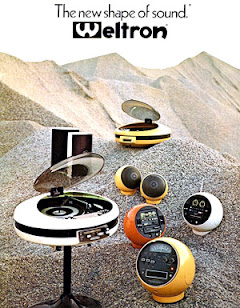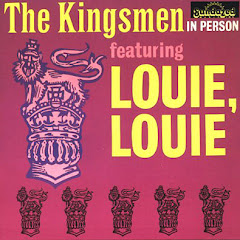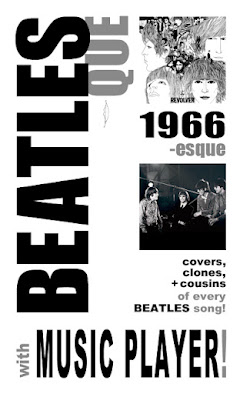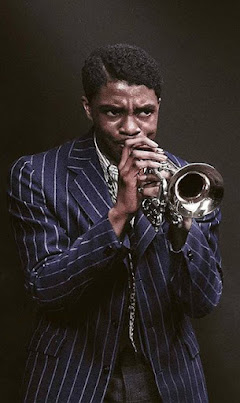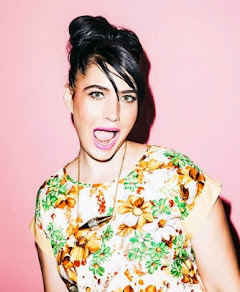...with 2 World-Spanning Music Players!
(Part 2 of 7 decades)
Grace Slick and Janis Joplin.
Photo: Jim Marshall.
RockSex
now brings you the actual, all-inclusive history of Rock'n'Soul music, with Music Players.
▶ Music Player Checklist
WOMEN OF ROCK:
1960s
#2 of 7
This 7-part series with Music Players will cover
every decade of the Women Of Rock,
from the 1950s to today!
Learn the real and inclusive history
you've never heard!
'50s---'70s---'80s---'90s---'00s---'10s
Shortcut links to Music Players:
• Women Of Rock: 1960-'66
• Women Of Rock: 1967-'69
W O M E N
O F
R O C K:
1960-'66
The Luv'd Ones
Spotify playlist title=
Women Of Rock: 1960-'66This is a Spotify player. Join up for free here.
*(This Player is limited to the first 200 songs.
Hear the unlimited Playlist here.)
This Music Player covers women in all forms of Rock'n'Roll music, from
1960 through 1966, in chronological order.
Rockabilly! Soul! Surf!
Girl Group! Beat! Garage!
Folk! Blues! Country!
Ye-Ye! Shake! World!
(All Bold names are heard on the Player.)
Rock'n'Roll has always been shaped by everybody. So why do we even have to specify 'Women Of Rock'?
Because
presence defeats absence. You have to see something to know that it's there. When someone is kept out of sight, it's that much more crucial to shine the spotlight on them at every turn, until everyone finally recognizes who was there all along.
Women have been a part of every musical movement, but for decades the cartoon history of Rock has been told as select men and modes turning over. This simplistic outlook and biased exclusion is what demands the move toward fairer inclusion. It's long past time to see clearer and deeper. In truth, Rock'n'Roll is a fluid ocean, rotating noted waves on the surface but driven by less visable and complex currents beneath. The people excluded from the narrative have ridden every wave noticed on the surface as much as those select men, while helping shape all the much subtler currents powering them.
Inclusion comes when exclusion ends. These Music Players, and the insights into them which follow, spotlight the vast range of global women who shaped Rock in the 1960s and ushers them gratefully into the room.
The Chantels
The original
Rock'n'Roll didn't end in the early '60s just because a handful of male heroes fell out,
> and didn't return magically in 1964 from English guys. It actually kept rolling right on into the new decade uninterrupted with fresh tides. What's most important to remember about Soul, Girl Group, Doo Wop, and Surf is that they were all seen collectively as forms of young Pop, all heard as
Rock'n'Roll, because they were.
Repression is static, progression is dynamic. AM radio was a stealth revolution, a forum for all music forms where any record won if it had 'a good beat and was easy to dance to'. Stealthily, those dance moves were swaying into a diverse movement, a jet-age generation sharing new outlooks and expressions beyond the stolid and the segregated. Where adults outside of it just noted fads and idols, the youth were swimming in rich new possibilities that would drive the decade.
Sister Rosetta Tharpe,
Wanda Jackson; LaVern Baker.
Rock is polyglot; it morphed from many sources and kept on mutating exponentially.
> In the early '60s, women from the original wave of Rock'n'Roll
> kept cresting boldly forward, like
Sister Rosetta Tharpe,
Wanda Jackson,
Janis Martin, and
LaVern Baker. Even as Elvis, Jerry Lee,
Buddy,
Richard,, and
Chuck were sidelined, their fire was clearly relayed in songs like the all-female band
The Chantels' "
Well, I Told You",
The Charmaines' "
Rockin' Old Man", and
The Crystals' "
All Grown Up".
The Shirelles; The Ronettes; The Shangri-Las.
If it seems odd that those famous
Girl Groups were belting Rock'n'Roll, it proves the true point;
Girl Group is another catchall limitation placed on women who were beyond its doll-toy boundaries.
The Shirelles,
The Cookies, and
The Ronettes sang a range of melodies, and their streamlined pop and production punch molded the British Invasion. As did the soulful pop of
Motown with the sass and class of
The Marvelettes,
Mary Wells,
Martha And The Vandellas,
Debbie Dean,
The Supremes, and
Chris Clark. Keeping it streets,
The Shangri-Las, The Goodies, and
The Whyte Boots covertly turned goodgirl and badgirl polarities inside out with their
biker songs and dramatic confessionals.
Behind the curtain lay the
songwriting wizardry of Ellie Greenwich, Cynthia Weil, and Carole King at the Brill Building, and Sylvia Moy, Janie Bradford, Syreeta Wright, and Valerie Simpson at Motown.
Soul is human experience writ passionate, and mature scribes like
Etta James,
Aretha Franklin,
Fontella Bass,
Timi Yuro, and
Carla Thomas reinterpreted how to be a modern song interpreter outside of lounges and cabarets, setting the new standard to follow. The rollicking
Ike And Tina Turner Revue also gave us bold soul sisters like
The Ikettes [
"I'm Blue (The Gong Song)"],
The Mirettes, and
P.P. Arnold. The James Brown Show would bestow us with hard-workin' women like
Yvonne Fair,
Sugar Pie DeSanto, and
Tammy Montgomery (Tammi Terrell).
Chiyo Ishi And The Crescents;
Carol Kaye; Darlene Love.
Surf> rose past its initial wave in the sun to continue undulating for decades. Riding with it from the start were women like
Kay Bell And The Tuffs'
"(The Original) Surfer Stomp" (1961),
Kathy Lynn And The Playboys'
"Rock City", and guitarist Chiyo Ishi on
The Crescents'
"Pink Dominos". The great
Carol Kaye played bass on all The Beach Boys and
The Honeys productions. Twining some soul twist into the beach cookout were
Dee Dee Sharpe,
The Supremes, and
The Orlons, while
Darlene Love and The Blossoms sang Surf hits for Hal Blaine, Al Casey, and Duane Eddy.
“Protest against the rising tide of conformity.”
Bob Dylan and Joan Baez, 1963.
Folk was the rallying call for the young, compassionate, and aware. It harbingered a back-to-the-roots outlook that embraced rural roots musics like Gospel, Blues, and Country, and vitalized populist acts like
Miram Makeba (South Africa),
The Staple Singers (with Mavis),
Malvina Reynolds (with her pleasantly scathing
"Little Boxes"),
Odetta,
Nina Simone,
Judy Collins, and the flexible
Judy Henske. Troubadour activist
Joan Baez gave Bob Dylan his entrée to the scene, while Native American activist
Buffy Saint Marie penned classic songs famously covered like
"Universal Soldier" (Donovan) and
"Codine" (The Charletans SF).
The egalitarian outlook of the folk movement was reflected in pairings like
Peter, Paul, And Mary,
Ian And Sylvia, and
Mimi And Richard Farina (and soon in the PsychFolk duos and bands).
Barbara Lynn;
Barbara Dane; Judy Roderick.
Folk ignited reappreciation of
Blues elders like Muddy Waters, Howlin' Wolf,
Big Mama Thornton, Sippie Wallace, and
Elizabeth Cotten, who toured on festival bills around the world. The healthy focus on rich traditions benefitted new artists like the soulful guitarists
Barbara Lynn,
Barbara Dane, and
Judy Roderick, a generational hand-off of living cultural traditions that still continues. Singer
Koko Taylor would bring gutbucket glory to rival Janis Joplin in the latter '60s.
Folk, Gospel, and Blues were also a refuge for
female musicians to play their instruments with a little less of the pressures of the Pop world trying to domesticate or doll-ify them for mass consumption.
Les Surfs; Tina Y Tesa;
Kayoko Moriyama.
'50s Rock'n'Roll was immediately reflected
globally, and even more so in the early '60s. All across Europe with
Helen Shapiro and The Vernons Girls (England);
Heidi Bruhl and
Dany Mann (Germany);
Hedika and
Nicole Paquin (France);
Les Surfs (Madagascar);
Gelu,
Tina Y Tesa, and
Trio Juventud (Spain); and
Laura Bordes And The Revolts (IndoRock from the Netherlands).
And across the Equator with
Derrick And Patsy (Jamaica);
Vianey Valdez and
Angelica Maria (Mexico);
Meire Pavão (Brazil); and
T.N.T. (Uruguay).
And across all oceans with organist
Cherry Wainer (South Africa);
Betty McQuade,
Toni McCann, and
Dinah Lee (Australia);
Ivor Fisher And The Satellites (New Zealand); and
Kayoko Moriyama and
Yukari Ito (Japan).
France Gall; Caterina Caselli.
In France, upbeat dance music was called
Yé-yé, with ironic Lolitas like
France Gall [
"Laissez Tomber Les Filles" (a.k.a., "Chick Habit"], Beat divas like
Sylvie Vartan, rockers like
Jacqueline Taïeb, and moodier interpreters like
Francoise Hardy and
Marie Laforet. In Italy it was called
Shake, with brash belters like
Mina,
Rita Pavone,
Catherine Spaak, and
Caterina Caselli. There were equivalent scenes in Spain and Japan.
(The danger of infantalizing anyone young and female into packaged doll groups that haunted Girl Group and Yé-yé has now hyper-escalated with J-Pop and K-Pop.)
The Supremes' "A Bit Of Liverpool" (1964).
The British Invasion wouldn't exist like it did without the inspiration of Girl Group songs, as proven by career-making covers of The Shirelles'
"Boys" and
"Chains" and
"Putty In Your Hands",
The Donays'
"Devil In His Heart",
The Exciters'
"Do-Wah-Diddy",
Nina Simone's
"Don't Let Me Be Misunderstood",
Bessie Banks'
"Go Now", and
Goldie And The Gingerbreads'
"Can't You Hear My Heartbeat?".
Conversely, the dialogue went both ways as the unprecedented success of
The Beatles then inspired female artists. Their sound was reflected immediately by
Jeannie And The Big Guys (England),
Rod And Carolyn (England),
The Beatle-Ettes,
The Bootles,
Die Sweetles (Germany), and
Les Beatlettes (Canada).
Ella Fitzgerald shocked her upscale set by enthusiastically swinging
"Can't Buy Me Love". At Motown,
Oma Heard resounded about her
"Lifetime Man", and songbook cover albums like
The Supremes'
A Bit Of Liverpool and
Mary Wells'
Love Songs To The Beatles were served to a tee.
Motown made its big splash into England via a TV special by
Dusty Springfield hosting label acts. Dusty led a home court of women equally vital to the range of the British Invasion, like
Marianne Faithfull,
Lulu,
Sandie Shaw, and
Cilla Black. Meanwhile, some of Jimmy Page's earliest session gigs were for
Jackie DeShannon's
"Dream Boy" and
Brenda Lee's
"Is It True?".
The Liverbirds
The most vital impact of The Beatles on women was not the screaming teens, but actually the scores of
all-female bands that formed by their inspiration. Chided as novelties, under-recorded at every turn, mistreated like everything but the earnest musicians they were, these sweet punks were the future regardless of the mean and the clueless. They blasted out Beat, Freakbeat, FolkRock, and then Garage with all the gusto of their brothers. This went unheralded for decades until collectors and cratediggers brought them properly to light.
Goldie And The Gingerbreads;
The Daughters Of Eve; Dara Puspita.
The Girls In The Garage included
The Liverbirds,
The Pleasure Seekers (with Patti and Suzi Quatro),
The Womenfolk,
Goldie And The Gingerbreads,
The Girls (the teenage Sandoval sisters),
The Continental Co-Ets,
The Belles (who turned the garage anthem "Gloria" into
"Melvin"),
The Clinger Sisters,
The Bitter Sweets,
Les Intrigantes (Canada),
The Fair Sect (New Zealand),
Las Mosquitas (Spain),
Las Akelas (Spain),
Dara Puspita (Indonesia), and
The Luv'd Ones with the brilliant guitarist Char Vinnedge. (There are scores more of all-female bands unavailable on the Player. Learn about more
here and
here)
Weaselspeak phrases like "one of the few female..." should always raise a red flag. It doesn't mean women couldn't do a task, it's simply doublespeak glossing over how they were
kept from doing it. When historians say "rare", it really means they are just unaware. Women had been playing instruments well since they were invented; the trick is being acknowledged doing it. In the '50s, the relentless crush to domesticate women didn't curtail Rockers like Sister Rosetta and Wanda, or Jazzers like Vi Redd and
Dorothy Ashby, or all-female bands like The Rhythm Ranch Girls and Las Mary Jets (Mexico), or
The Mary Kay Trio (guitarist from Hawaii), from giving it their all. But if you're under-recorded or un-archived, you disappear as if you were never there.
And sometimes you can vanish in plain sight. Quite a few '60s male bands included
female players, even as management tried to push them out or forward. Honey Lantree was treated like a novelty as the drummer for The Honeycombs, but other drummers like Jan Errico (first
The Vejtables and then
The Mojo Men) and Karen Carpenter (The Carpenters) were brought forward as the frontperson instead, made visable now more for their allure instead of for their skills.
Fortunately, some artists rebelled the other way with deliberate
parity. Bo Diddley dueled happily with two female guitarists, first Lady Bo and then The Duchess. The equitable
Sly And The Family Stone proudly flaunted their sisters in lyrics and onstage, with Rose Stone on keys and Cynthia Robinson on trumpet. And some won by quality and quantity: session ace Carol Kaye played bass on more timeless hit classics and TV themes than anyone can ever count.
Velvet Underground and Nico
But women held their own upfront as well with
female-fronted outfits like
Raylene And The Blue Angels,
Denise And Co.,
The Clefs Of Lavender Hill,
Monique And The Lions (Germany),
Linda Van Dyck backed by Boo And The Boo Boos (Netherlands), and
Nico with
The Velvet Underground (with drummer Maureen Tucker).
Listening through the Player, it's clear that women flowed with every current and cross-current of the '60s, sidelong with Elvis, The Beach Boys, Bob Dylan, The Beatles, Marvin Gaye, and The 13th Floor Elevators. As the counterculture now consolidated in the Summer Of Love, they would become even more pervasive and integral.
W O M E N
O F
R O C K:
1967-'69
Os Mutantes
Spotify playlist title=
Women Of Rock: 1967-'69This is a Spotify player. Join up for free here.
*(This Player is limited to the first 200 songs.
Hear the unlimited Playlist here.)
This Music Player covers women in the mutating forms of Rock'n'Roll music, from
1967 through 1969, in chronological order.
Garage! Psychedelic! Roots!
PsycheFolk! World! HAIR!
Funky! Electronic! Hard Rock!
(All Bold names are heard on the Player.)
When people think of women in '60s Rock, they think of
Grace Slick and
Janis Joplin.
As they should, because they're both essential. But they are the surface tsunamis of a deeper, wider scene.
San Francisco became the vanguard of the social revolution precisely because it was cosmopolitan. Culture is the constant assimilation of fresh ideas from all angles, from all people, and crossroads cities have always been the nexus of progressive creativity because of it. As such, the Bay Area had more eclectic line-ups and sounds than almost anywhere, first.
The Vejtables; The Peanut Butter Conspiracy;
It's A Beautiful Day.
Visibility is the key. Because Grace Slick of
The Great Society and
Jefferson Airplane and Janis Joplin of
Big Brother And The Holding Company had smash hits, they were seen nationally on music shows and the MONTEREY POP (1968) and WOODSTOCK documentaries (1969). But less seen were Bay Area bands with female members also slinging modern folk and blues like
The We Five, The Vejtables, The Mojo Men,
The Generation (with Lydia Pense),
The Serpent Power,
The Peanut Butter Conspiracy,
Fifty Foot Hose,
Mother Earth (With Tracy Nelson), and
It's A Beautiful Day.
Sly And The Family Stone
Sly And The Family Stone are often heralded as 'the first (and only)
integrated band, male and female, black and white'. But it takes nothing away from one of the greatest groups of all time to say this is inaccurate. They were cousined by US brothers and sisters like
The Loading Zone (with Linda Tillery),
The Rotary Connection (with Minnie Riperton), and
Sweetwater; and in England with
The Ferris Wheel and
Blue Mink.
Also in England, illusory borders continued dissolving as P.P. Arnold
jammed with The Small Faces and Rod Stewart,
Marsha Hunt with Deep Purple,
Sharon Tandy (South Africa) with Les Fleur De Lys, Yoko Ono with John Lennon and The Rolling Stones, and
Martha Velez with everyone. If the culture at large still thought the world was color faces in slotted places, the counterculture saw one world one people and infinite possibilities.
The pattern toward progress here is
hybrid. With each passing year, the sounds that youth had heard side-by-side on AM blended together into the personnel, sounds, and outlooks of new bands who embraced diversity as freedom, and who found support on college stations in the freeform frontier of the new alternative FM radio.
The Mamas And The Papas;
The 5th Dimension; Los Stop.
These good vibrations are why
vocal groups blended Motown, Dylan,
Brian Wilson, and The Beatles to become acts like
The Mamas And The Papas,
Spanky And Our Gang,
Sagittarius,
The Fifth Dimension,
The Free Design,
Honey Ltd.,
The City (with Carole King),
Chorus Reverendus (France),
Los Stop (Spain), and
Sergio Mendez And Brazil '66 (Brazil).
The success of Grace and Janis bolstered the arrival of more
female-fronted Rock bands like
The Ravelles, Lydia Pense with
Cold Blood,
Yuya Uchida And The Flowers (Japan),
Ann Wilson And The Daybreaks (who would become Heart), and the great Mariska Veres with
Shocking Blue (Netherlands).
Psychedelic bands had female members in the US with
Neighb'rhood Childr'n,
Daughters of Albion,
Birmingham Sunday,
The Unspoken Word,
The Savage Rose,
The Love Exchange,
Ill Wind, and
Kangaroo; and globally with
Os Mutantes (Brazil),
The Executives (Australia),
Hljómar (Iceland),
Aguaturbia (Chile),
Trúbrot (Iceland),
De Kalafe (Brazil), and
Os Novos Balanos (Brazil).
The Daisy Chain; The Ace Of Cups; The Feminine Complex.
All-female bands opened tour bills and recorded singles, and sometimes full albums, like Dara Puspita (Indonesia),
The Daisy Chain (who later became the mega-heavy Birtha),
The Ace Of Cups,
The Daughters Of Eve,
The Puppets,
The Feminine Complex,
The She Trinity, and She.
Joni Mitchell; Vashti Bunyan; Deborah Harry.
Folk took on manifold forms. From the sinuous flux of
Joni Mitchell and eerie soliloquies of
Vashti Bunyan (England), to duos flexing out like
Blackburn And Snow,
Smokey And His Sister, and
Lily And Maria. And into uncharted furrows with the
PsycheFolk of
The Insect Trust,
The Bristol Boxkite, It's A Beautiful Day, and
The Wind In The Willows (with Deborah Harry). Many Americana roots musics laced back to European seeds; a harvest of new English artists like
Fairport Convention (with Sandy Denny),
Pentangle, and
Renaissance (with Annie Haslam) were now branching out into forms of progressive folk.
The back-to-the-roots music ethos rippled in tandem with the back-to-nature movement, as the counterculture embraced communalism, ecology, alternate spiritualities, rustic fashions, and natural appearance as a counterpoint to the slick, the selfish, and the flashy. Protest folk had formed an activist society grounded in the humanitarian and the equitable, in direct contrast to conformity and consumerism. It paralleled the general pattern of a massive and complex generation trying to reexamine and recontruct themselves at every turn. To be free in body and spirit, and to connect with each other fully.
Aretha Franklin; Sarolta Zalatnay; Les Planetes.
Aretha Franklin redefined herself and
Soul music in 1967, making it more raw, more epic, more intimate. Soul artists were singing Rock songs, Rock artists were jamming Jazz, Jazz was going funky, and everyone was playing on the same festival bills with World artists. Every soul has soul and putting passion into the compassion were
The Flirtations, the swamp soul of
Bobbie Gentry and
Delaney And Bonnie,
Linda Lyndell (
"What A Man"),
Chicken Shack (with Christine McVie),
Laura Nyro,
Las Quatro Monedas (Venezuela), the bluntly-named
Females (Indonesia),
Sarolta Zalatnay (Hungary),
Sodsai Chaengkij (Thailand), and
Les Planètes (Canada). Get it on the good foot, good god, y'all!
The HAIR cast upbraid London, 1968.
After decades of vanilla sing-songs, Broadway was occupied by the revolution in 1968 with
HAIR: The American Tribal Love-Rock Musical, which broke every social restriction overnight to smash success. Along with the first black female Broadway lead ever with Melba Moore, its international productions launched the careers of cast members like Diane Keaton, Sonja Kristina (Curved Air), Elaine Paige, Marsha Hunt, Donna Summer, and Sônia Braga. Its songs became new utopian standards covered by The Supremes, Nina Simone, The Free Design, The 5th Dimension,
Julie Driscoll, Carla Thomas, and countless more. No matter what anyone looked like, no matter what niche they were boxed by, these artists knew themselves instead as a tribal community of hearts and sounds.
Electronic music broke through to the mainstream with the 1968 success of
Wendy Carlos' all-electronic
Switched On Bach album. Other pioneers continued collaging patch-cord and tone-honed miracles like
Delia Derbyshire (the original
"Doctor Who Theme"),
Alice Shields, and
Pril Smiley. The revolution shifted from college labs to pop studios with the first Moog synths in 1968, as it synergized into experimental Rock by
The United States Of America (who became
Joe Byrd And The Field Hippies) and Fifty Foot Hose.
As Acid Rock warped into
Heavy Rock, women hefted the heaviosity like Sharon Tandy with Les Fleur De Lys, the proto-Occult rock of
Coven, the multinational The She Trinity, the iconoclastic Julie Driscoll with Brian Auger Trinity, Aquaturbia, and the Prog of
Affinity. Char Vinnidge pitchshifted the Beatle-isms of The Luv'd Ones to full-bore Hendrix acidfuzz, as did The Pleasure Seekers in their transmutation toward becoming Cradle.
Betty Davis would outdo all of them. Being 'ahead of your time' just means everyone else was behind. The songwriter previously known as "Miles' wife", a counterculture dervish who's influence singlehandedly inspired
Fusion with his BITCHES BREW (1969) album, stepped forward fronting acidic jams backed by Jimi's brothers Mitch Mitchell and Buddy Cox, and Jazz luminaries like Hancock, Masekela, Shorter, McLaughlin, Sample, and Felder. The sessions weren't released for many years, but she would ascend anyway as the queen of Funk Rock in the next decade.
The Svelts, 1968;
Jean Millington (L), June Millington (R).
But the final word here about the '60s should be about the first word of the '70s:
Fanny. In 1964, the filipina sisters June and Jean Millington of California were inspired by The Beatles to form an all-female band called The Svelts. After the usual turnovers, they were Fanny by 1969, and became the first all-female band signed by a major record label to record multiple albums. They summed up all of women's momentum of the decade in one band, ready to open the next decade with wider possibilities.
1950s Rock'n'Roll started with hundreds of female acts, and this became rapidly exponential with each decade.
As this series of Music Players will prove, they dominoed every decade through the '60s, the '70s, the '80s, the '90s, the '00s, and the '10s.
We've heard enough of his story, so let's widen the world with the history of her story.
Next:
Women Of Rock: The 1970s
©
Tym Stevens
See Also:
Part 1 (of 2):
• YOU DON'T OWN ME: The Uprising of the 1960s GIRL GROUPS
Part 2 (of 2):
• SHE'S A REBEL: Decades Of Songs Influenced By The GIRL GROUPS
-
Women Of Rock: The 1950s (2 Music Players!)
Coming:
• Women Of Rock: The 1970s (2 Music Players)
• Women Of Rock: The 1980s (3 Music Players)
• Women Of Rock: The 1990s (2 Music Players)
• Women Of Rock: The 2000s (2 Music Players)
• Women Of Rock: The 2010s (2 Music Players)
• The Real History of Rock and Soul!: A Music Player Checklist


































































